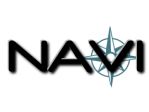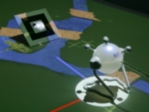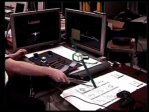DWARF - Distributed Wearable Augmented Reality Framework
About DWARF
DWARF is a CORBA based framework that allows the rapid prototyping of distributed Augmented Reality applications. Read more...Running DWARF and Working with it
- Tutorials: Various tutorials about Deployment, Infrastructure and Guidelines
- Documentation: Interfaces, Services (work in progress)
- The DWARF FAQ: Any Problems? Read this first!
- Mailling list: The DWARF developers mailing list. Subscribe, read the archives or send questions there
- Feature Requests: Some of our internal wishes - old and often deprecated - require's cleanup
Projects that use DWARF

Pathfinder
This was the first demonstration system for the DWARF framework. It shows Yet-Another-Campus-Navigaiton scenario but stays here for sentimental historic reasons (since it shows the old location of the computer science department in the heart of munich).
SHEEP
In this demo, we use a multiplayer shepherding game to explore the possibilities of mutimodal, multiuser interaction with wearable computing in an intelligent environment. The game is centered around a table with a beamerprojected pastoral landscape. Players can use different intuitive interaction technologies (beamer, screen, HMD, touchscreen, speech, gestures) offered by the mobile and stationary computers. Building on our DWARF framework, the system uses peer-to-peer, dynamically cooperating services to integrate different mobile devices (including spectators laptops) into the game.
NAVI
"Navigation Aid for Visually Impaired"; A talking streetmap for blind people. The system will be used by people who can't see or read the ouput given on a screen. Therefore we must provide feedback and ouput in acustic and tactile mode. The input must be designed in a way that the user knows also without seing something where in the menus he is and how he can get where he wants. During the navigation process a lot of events occur where the system has some informational output for the user. Through data filtering we want to guess which information the user wants to know and which information isn't of interest.
ARCHIE
For producing buildings in a collaborative way with all involved persons, ARCHIE (Augmented Reality Collaborative Home Improvement) shall be responsible for giving the system user the most familiar way to handle the information during the development process.Demo ARCHIE -- internal project page
HEART
"Heart surgery Enhanced by Augmented Reality Techniques"; in Cooperation with Deutsches Herzzentrum, Munich.Minimally invasive or totally endoscopic cardiac surgery is an operation technique in which physicians operate through small incision points at the operating region, either using endoscopic tools or master-slave robot systems. In either case, the field of view of the physician is quite limited to a small area around the operating region. To get more general overview, preoprative imaging and planning data can be used through Augmented Reality techniques.
Break Out
An Augmented Reality computer game. Adapted version of good old Arkanoid or other wall breaking games.
CAR
The goal of CAR is to create a collaboration platform for computer scientists (UI programmers) and non-technicans (human factors, psychologists etc.). The platform allows collaborative design of visualizations and interaction metaphors to be used in the next-generation cars with Head-Up Displays. We focus on two scenarios: parking assistance and a tourist guide.
Ubiquitous Tracking
Augmented Reality applications are highly dependent from accurate and precise tracking data. Since current tracking technologies do not always provide such information everywhere in real-time application developer must combine certain trackers together to minimize the disadvantage of one tracker by another. These sensor networks can then be used to deliver positional relation information of objects to the application which then can be evaluated. By introducing the Ubitrack framework it is possible to form ubiquitous tracking environments which may consist of several sensor networks.
Immersive Configuration
In user interfaces in ubiquitous augmented reality, information can be distributed over a variety of different, but complementary, displays. For example, these can include stationary, opaque displays and see-through, head-worn displays. Users can also interact through a wide range of interaction devices. In the unplanned, everyday interactions that we would like to support, we would not know in advance the exact displays and devices to be used, or even the users who would be involved. All of these might even change during the course of interaction. Therefore, a flexible infrastructure for user interfaces in ubiquitous augmented reality should automatically accommodate a changing set of input devices and the interaction techniques with which they are used. This project embodies the first steps toward building a mixed-reality system that allows users to configure a user interface in ubiquitous augmented reality.This project has been conducted at Columbia University by a a visiting scientist from our research group. .
... and some unlistet projects with third party
Selected Dwarf Publications
This is a list of selected recent publications of our group. We also have a complete list of publications.| M. Bauer, B. Bruegge, G. Klinker, A. MacWilliams, T. Reicher, S. Riß, C. Sandor, M. Wagner
Design of a Component-Based Augmented Reality Framework Proceedings of The Second IEEE and ACM International Symposium on Augmented Reality (ISAR 2001), pp. 45-54. (bib) |
||
| In this paper, we propose a new approach to building augmented reality (AR) systems using a component-based software framework. This has advantages for all parties involved with AR systems. A project manager can reuse existing components in new applications; an end user can reconfigure his system by plugging modules together; an application developer can view the system at a high level of abstraction; and a component developer can focus on technical problems. Our proposed framework consists of reusable distributed services for key subproblems of AR, the middleware to combine them, and an extensible software architecture. We have implemented services for tracking, modeling real and virtual objects, modeling structured navigation or maintenance instructions, and multimodal user interfaces. As a working proof of our concept, we have built an indoor and outdoor campus navigation system using different modes of tracking and user interaction. | ||
| This material is presented to ensure timely dissemination of scholarly and technical work. Copyright and all rights therein are retained by authors or by other copyright holders. All persons copying this information are expected to adhere to the terms and constraints invoked by each authors copyright. In most cases, these works may not be reposted without the explicit permission of the copyright holder. | ||
| A. MacWilliams, C. Sandor, M. Wagner, M. Bauer, G. Klinker, B. Bruegge
Herding Sheep: Live System Development for Distributed Augmented Reality Proceedings of The Second International Symposium on Mixed and Augmented Reality (ISMAR 2003), pp. 123-132. (bib) |
||
| In the past, architectures of Augmented Reality systems have been widely different and taylored to specific tasks. In this paper, we use the example of the SHEEP game to show how the structural flexibility of DWARF, our component-based Distributed Wearable Augmented Reality Framework, facilitates a rapid prototyping and online development process for building, debugging and altering a complex, distributed, highly interactive AR system. The SHEEP system was designed to test and demonstrate the potential of tangible user interfaces which dynamically visualize, manipulate and control complex operations of many inter-dependent processes. SHEEP allows the users more freedom of action and forms of interaction and collaboration, following the tool metaphor that bundles software with hardware in units that are easily understandable to the user. We describe how we developed SHEEP, showing the combined evolution of framework and application, as well as the progress from rapid prototype to final demonstration system. The dynamic aspects of DWARF facilitated testing and allowed us to rapidly evaluate new technologies. SHEEP has been shown successfully at various occasions. We describe our experiences with these demos. | ||
| This material is presented to ensure timely dissemination of scholarly and technical work. Copyright and all rights therein are retained by authors or by other copyright holders. All persons copying this information are expected to adhere to the terms and constraints invoked by each authors copyright. In most cases, these works may not be reposted without the explicit permission of the copyright holder. | ||
| M. Bauer, O. Hilliges, A. MacWilliams, C. Sandor, M. Wagner, G. Klinker, J. Newman, G. Reitmayr, T. Pintaric, T. Fahmy, D. Schmalstieg
Integrating Studierstube and DWARF International Workshop on Software Technology for Augmented Reality Systems. Tokyo, Japan, Oct. 7, 2003 (bib) |
||
| Studierstube and DWARF are modular Augmented Reality frameworks, each with distinct advantages in different application areas. Both can easily be extended by adding new components. In this case study we show how new components can act as a bridge between the frameworks. By facilitating the exchange of basic data types such as pose and user input, the frameworks become interoperable. This allows us to build new applications leveraging the advantages of both frameworks, while fostering cooperation between research groups. | ||
| This material is presented to ensure timely dissemination of scholarly and technical work. Copyright and all rights therein are retained by authors or by other copyright holders. All persons copying this information are expected to adhere to the terms and constraints invoked by each authors copyright. In most cases, these works may not be reposted without the explicit permission of the copyright holder. | ||
| A. MacWilliams, T. Reicher, B. Bruegge
Decentralized Coordination of Distributed Interdependent Services IEEE Distributed Systems Online -- Middleware Work in Progress Papers, June 2003 (bib) |
||
| Current middleware technology for ubiquitous computing connects mobile computers to services in the environment. This is often insufficient because it doesn't address the issue of services depending on other services. The DWARF framework offers a decentralized approach to configuring and coordinating interdependent services. | ||
| This material is presented to ensure timely dissemination of scholarly and technical work. Copyright and all rights therein are retained by authors or by other copyright holders. All persons copying this information are expected to adhere to the terms and constraints invoked by each authors copyright. In most cases, these works may not be reposted without the explicit permission of the copyright holder. |








